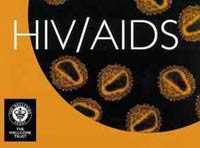New method of testing HIV
Scientists have found a new technique to detect early HIV virus and monitor the development of AIDS without having to freeze plasma. This new method is very suitable for developing countries, especially African countries.
According to the United Nations AIDS Organization (UNAIDS), nearly one-third of worldwide HIV and AIDS deaths occur in sub-Saharan countries. One of the reasons is that people do not have access to HIV testing and treatment because the cost is very expensive.
 Scientist John Crump and his research team at Duke University have completed a 10-month survey in remote areas of Tanzania. They track the children whose parents are infected with HIV, need regular virus testing to determine the progression to AIDS.
Scientist John Crump and his research team at Duke University have completed a 10-month survey in remote areas of Tanzania. They track the children whose parents are infected with HIV, need regular virus testing to determine the progression to AIDS.
In their survey, the researchers found a new method, which is a test of dried blood spot called DBS analysis (due to the abbreviation of Dried Blood Spot), instead of analyzing it on a frozen plasma sample. cold is difficult to do, because it takes from the survey team to the central laboratory in Kilimanro, 350km apart.
They found a close correlation between the results of the plasma analysis and the DBS analysis results, which can be compared to standard methods. ' This work can lay the foundation for a new technique to test and monitor disease progression for HIV-infected patients in the future .' That is the judgment of Dr. John Bartlett, assistant director of the Global Institute of Health under Duke University.
If when a child is suspected of being infected with HIV, HIV testing should be done as soon as possible, because treatment must be done for a long time (sometimes lifelong). In the absence of typical HIV antibody test conditions, other methods, including DBS, need to be applied.
Virus testing is the best way to monitor disease progression in HIV-infected people, especially to provide treatment regimens for each period.

In remote areas of Tanzania, scientists tracked children whose parents were infected with HIV.(Artwork: Vetaid.org)
But in Tanzania, to test for HIV and blood samples from local patients, they must move very far to places with adequate equipment. Plasma needs to be kept constant during transport is a big challenge for them and is almost impossible. So the results are no longer accurate.
Bartlett pointed out the low cost of this method and said: " Determination by dried blood stains has many advantages compared to the cooling plasma method. Before being applied in human care and treatment program HIV infection still needs further evaluation. But extensive studies of DBS methods show that the method is very promising . '
- Australia: Applying a new DNA testing method with an 79% accuracy rate
- The ancestor cannot be identified by DNA testing
- Scientists developed methods for rapid testing of influenza viruses
- Method of treatment of ultrasonic cerebral infarction
- Canada's new DNA testing method
- Create mice with mental illness to test drugs
- The breakthrough that helps test cocaine is 99% accurate in just seconds
- Identify crime in 90 minutes thanks to a new DNA testing machine
- New testing method reduces the risk of multiple births
- 'Technology' teaches new maths in the world: Discover algebraic rules before counting 1, 2, 3, 4 ... (Part 3)
- Finding new HIV testing methods gives the fastest results
- How is the DNA testing process done?
 Green tea cleans teeth better than mouthwash?
Green tea cleans teeth better than mouthwash? Death kiss: This is why you should not let anyone kiss your baby's lips
Death kiss: This is why you should not let anyone kiss your baby's lips What is salmonellosis?
What is salmonellosis? Caution should be exercised when using aloe vera through eating and drinking
Caution should be exercised when using aloe vera through eating and drinking